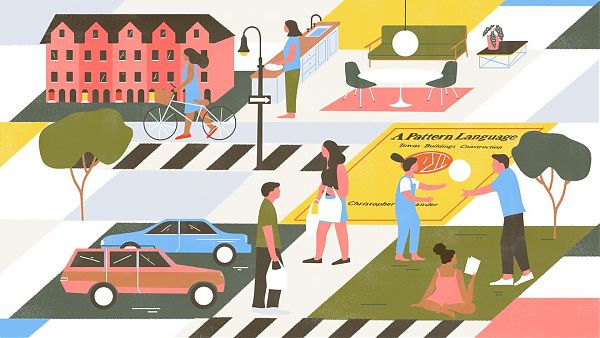Let Christopher Alexander design your life

Illustration by Naomi Elliott.
Second in the series Overdue Books, in which Curbed’s architecture critic Alexandra Lange takes a fresh look at classics of the architectural canon.
I received my copy of “A Pattern Language” as a high school graduation gift. I had already declared my intention to be an architect, so my aunt and uncle bought me the design equivalent of the Bible—thick and minimally illustrated, with a specialized system of numerical classification and a studiously typographic cover. If a non-architect is looking for a gift for a wannabe, there it is. As a design-enthusiast, you may have gotten a copy once too; the 42-year-old book is parked at the top of Amazon’s Architectural Criticism bestsellers list.
It looked handsome in my dorm room alongside my new dictionary and Benet’s Reader’s Encyclopedia. And like both of those tomes, I barely opened it. The architecture library was filled with books with lovely glossy pictures. My rudimentary word processing program had a thesaurus. What was a “pattern” anyway? And why were there 253 of them?
The book was enshrined but unread. But “A Pattern Language,” which was written by Christopher Alexander with Sara Ishikawa, Murray Silverstein, Max Jacobson, Ingrid Fiksdahl-King and Shlomo Angel (all colleagues at Berkeley’s Center for Environmental Structure in the 1970s) turns out to be an ideal place candidate for a re-read. A pattern is the way physical design responds to human relationships. I didn’t need it as a teenager, but I turned to it after I got married, and then again after I had kids. Patterns that were meaningless at 17 – like Pattern 73, “Adventure Playground”–feel like breadcrumbs charting a new way of looking at cities now that I’m a parent.
On X
Follow @LangeAlexandraOn Instagram
Featured articles
CityLab
New York Times
New Angle: Voice
Getting Curious with Jonathan Van Ness